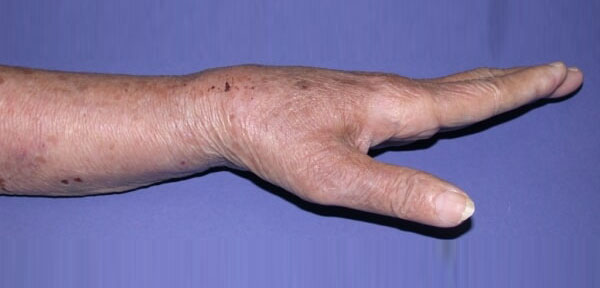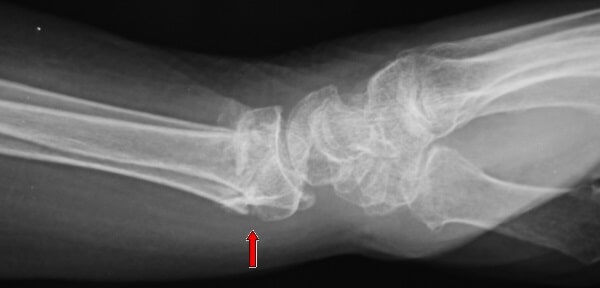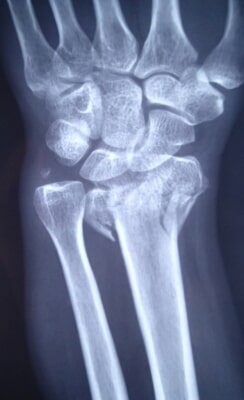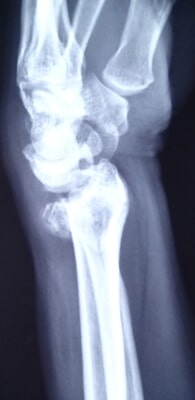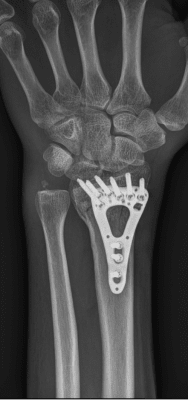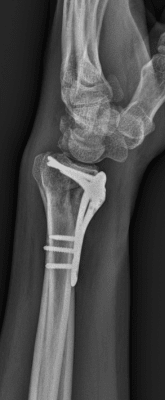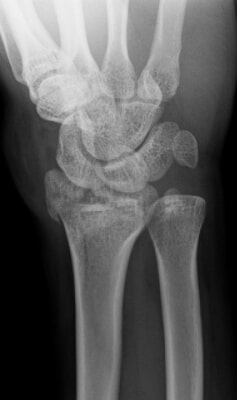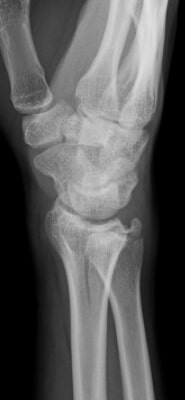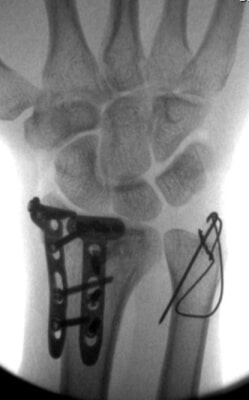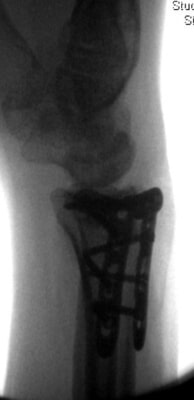Fractures of the Distal Radius
The forearm consists of 2 long bones – the radius and ulna. The lower end of the radius is called the distal radius, which forms part of the wrist joint. Fracture of the distal radius is one of the commonest fractures encountered by the hand surgeon.
Fractures of the distal radius often affect the more elderly and is associated with osteoporosis. Affecting women more than men, it is usually caused by a fall on outstretched hands, and result in a “dinner fork” deformity where the wrist becomes shaped like a dinner fork turned face down.
|
|
|
| Dinner fork deformity (arrow showing fracture with displacement) | |
Mild to moderate displacement of the fracture can often be treated with manipulation and reduction, and casting. This is done with sedation or local anaesthesia, where the fracture is pulled back into position, and stabilised with a cast.
However, if the fracture is severely displaced, or unstable, or if it is moderately displaced in a patient who is very active, surgery with internal stabilisation using titanium plates and screws gives a more predictable outcome with better results, and an earlier return to function.
|
|
|
|
|
| Badly displaced fracture distal radius, with fixed with titanium plate and screws | |||
Whichever the treatment method, healing of the fracture takes about 6 weeks, with full return of function taking about 3 months. The improvement continues to over a year after the fracture.
In the young, fractures of the distal radius result from high energy trauma, such as motor vehicle accidents and falls from heights. These cause more severe injuries which often affect the joint surface and ligaments. Usually, surgery to fix these fractures and reconstruct the ligaments are necessary.
|
|
|
|
|
| Multiple fragment fracture of the radius and ulnar styloid fixed with plates and screws, and wires. | |||
After surgery, and during and after cast treatment, hand therapy is necessary to regain function of the hand and wrist. Maintenance of shoulder movements is also important to prevent the development of frozen shoulder.



